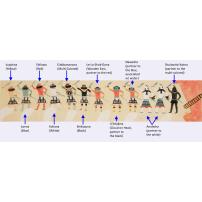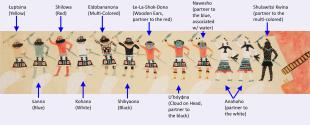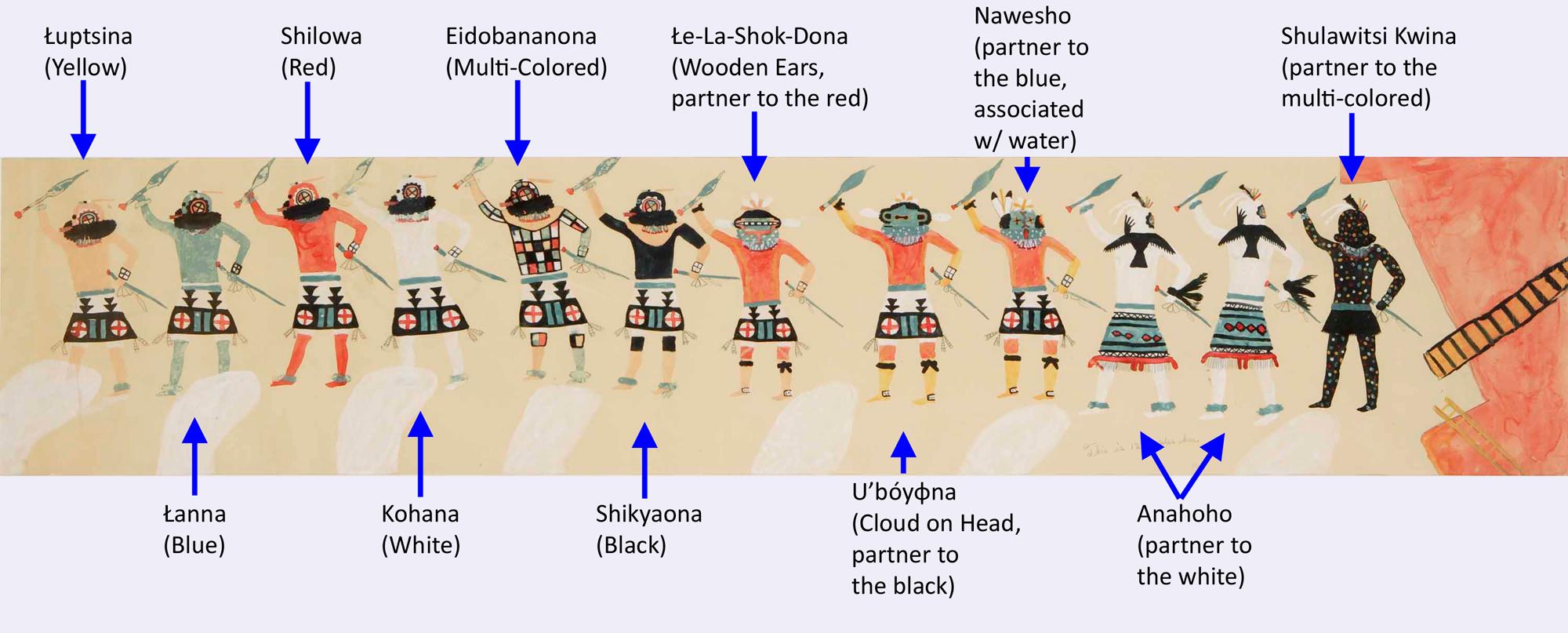
Photograph by Addison Doty. Copyright 2009 School for Advanced Research.
Painting
Artist or Maker: Unknown
Dimensions:
Overall: 167.6 x 37.5 cm (66 x 14 3/4 in.)
Overall1: 167.6 x 37.5 cm (66 x 14 3/4 in.)
Medium: paper | paint, watercolor?
Credit Line: Gift by bequest of Mary Austin.
Place Made:
Zuni Pueblo, McKinley County, New Mexico, Southwest, United States, North America
Object Number: IAF.P183
Not on view
Tribal Collection Review RemarksJim Enote and Octavius Seowtewa during collection review visit June 10 and 11, 2009 (Events Record “Collection Review: Zuni Tribe, Review 2”): This painting depicts a scene from the Young Men’s Initiation Ceremony. (Other scenes from this ceremony are depicted in IAF.P29 and IAF.P30.) The names of the dancers, from left to right: Thluptsina Salimobia (Yellow), Thlanna Salimobia (Blue), Shilowa Salimobia (Red), Kohana Salimobia (White), Eidobananona Salimobia (Multi-Colored), Shikyaona Salimobia (Black), Thle-La-Shok-Dona (Wooden Ears, partner to the Red Salimobia), U’bóyfna (partner to the Black Salimobia), Nawesho (partner to the Blue Salimobia, associated with water), two Anahoho (partners to the White Salimobia), and Shulawitsi Kwina (Black Fire God, partner to the Multi-Colored Salimobia). Thluptsina (Yellow Salimobia) does not have a partner because he is the big brother. This scene is depicted in the plaza. This dance group comes during the Young Men’s Initiation Ceremony. They are arranged in the correct order in the painting. All of them are holding yucca bundles like clubs in their right hands, and a single, long yucca leaf in their left hands. While this group is depicted here as participating in a Young Men’s Ceremony, they also come out during a certain night dance, except for the Anahohos, who only come out in the initiation ceremony.
Salimobias are dancers that participate in certain dances and ceremonies at Zuni. There are a total of 12 of them. Each of the six kivas at Zuni has a Salimobia group. They come in six colors, representing the six kivas and the six directions. There is yellow, blue, red, white, black, and multi-colored. (The multi-colored Salimobias are painted in blocks of purple, black, red, white, and two shades of blue.)There is two of each color, for a total of 12 Salimobias. They are disciplinarian figures that keep order during ceremonies.
In Collection(s)
The Indian Arts Research Center, in collaboration with Native American community scholars, strives to present accurate collections records. Records may be updated as new information becomes available and is reviewed with the Native American community having cultural affinity to particular items. Please write to iarc@sarsf.org if you have questions or concerns related to the documentation.


